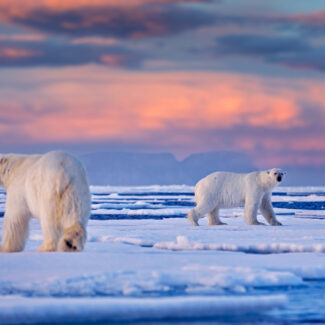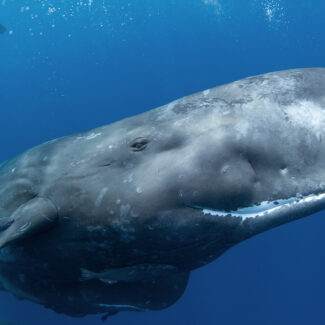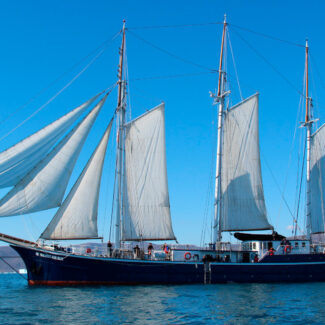Don Juan Pond, Antarctica: The Saltiest Body Of Water On Earth
Some of Antarctica’s most extraordinary sights lie within the series of barren, breathtaking glens within the Transantarctic Mountains known as the McMurdo Dry Valleys. Among the very driest landscapes on Earth, these frigid defiles are grand examples of Antarctic oases, kept mostly free of snow and ice by the sheer aridity of the air—enhanced, importantly, by the fierceness of the katabatic winds that sweep down the valleys from the surrounding mountain heights and sublimate snowcover.
Along with the gory pour-off of Blood Falls, the mummified carcasses of wayward crabeater seals, and sundry other head-spinning sights, the McMurdo Dry Valleys include one of the strangest bodies of water on Earth: Don Juan Pond.
Boasting an unusual aquatic chemistry and being superlatively salty—so salty in fact that it remains unfrozen even when temperatures plunge well below freezing—this modest-sized salt lake is the focus of much research, not only to learn more about the hydrology and geochemistry at work within its setting of Wright Valley, but also to shed light on potential parallels with an entirely different world: the Martian one.
How Salty Is Don Juan Pond?
Very! With a saline content of roughly 40 percent—perhaps ranging up closer to 44 percent at times —Don Juan Pond is about a dozen times saltier than the ocean, and is often called the saltiest lake in the world.
It does have competition in that category, mind you: A couple of African salt lakes—Ethiopia’s Gaet’ale Pond and Senegal’s Lake Retba—are also in the 40-percent range in terms of salinity, for example. And down Wright Valley a ways, meanwhile, Lake Vanda—the deepest lake in Antarctica and within the watershed of the White Continent’s longest river, the Onyx—is also exceptionally salty: about 35 percent. The famous Dead Sea in the rift valley of the Jordan River, by contrast, has a salt content of about 33 or 34 percent.
Where Is Don Juan Pond?
The saltiest body of water on the planet, Don Juan Pond, is located in the Wright Valley, the middle of the three main McMurdo Dry Valleys in Antarctica’s Victoria Land, just west of McMurdo Sound, situated between the Olympus Range to the north and the Asgard Range to the south.
Up the upper valley’s South Fork, nestled at the foot of the bare mesa called the Dais, edged by steep, granite- and dolerite-studded slopes to the north and the south, Don Juan Pond laps against the nose of a rock glacier to the west, which descends to here from an eroded upland overlooking the upper Wright Valley called the Labyrinth. Eastward is the gravelly, channel-laced corridor of the South Fork valley.
Why Is Don Juan Pond So Salty?
The McMurdo Dry Valleys play host to one of the world’s most extreme cold-desert climates: They get but a few inches of precipitation a year on average, delivered via sparse snowfall, and may go years without precipitation. Exposed to this harsh dryness, Don Juan Pond experiences significant evaporation that concentrates salt in the remaining water.
Don Juan Pond’s hypersalinity explains why it can stay liquid even when the South Fork of Wright Valley endures its brutally cold winter temperatures: on the order of -50 degrees Celsius (-58 degrees Fahrenheit).
Discovery & Naming of Don Juan Pond
Antarctica’s Don Juan Pond was discovered on a reconnaissance flight by a U.S. Navy helicopter on October 11, 1961. Its open water in the face of air temperatures around -24 degrees C (-11.2 degrees F) drew attention, and a U.S. Antarctic Research Program party made a number of trips to the pond in the following months.
That party named the strange waterbody Don Juan Pond in honor of the helicopter pilots who assisted the field efforts, Donald Rue and John Hickey.
Discovered in 1961 and named after its helicopter pilots, Don Juan Pond in Antarctica’s Dry Valleys remains a scientific marvel, defying freezing with its extraordinary salinity and offering insights into extremophile life.
Source: Dturme, CC BY-SA 4.0 <https://creativecommons.org/licenses/by-sa/4.0>, via Wikimedia Commons
The Nature & Origin Of Don Juan Pond’s Brine
Besides its concentration, the Don Juan Pond salt brine is highly unique for its composition, which is some 90 to 95 percent calcium chloride. Among the minerals precipitated from this brine is antarcticite, which was first described from Don Juan Pond a few years after its discovery.
How brine feeds into Don Juan Pond has been a hot topic of research. It’s a complicated debate, but basically boils down to whether shallow or deep groundwater provides the primary input. Dark-colored streaks called water tracks that pattern the slopes above the salt pond have been proposed as evidence for shallow inflow of brine over permafrost and down into the pond from its little “catchment area” (or drainage basin). But a 2017 study suggested that the chemical makeup of Don Juan Pond’s brine could only derive from a deep groundwater source, and that, fed by upwelling, the pondwater likely turns over on the order of every six months or so.
Scientists have speculated that perhaps that deep groundwater source is an aquifer of brine—one that might conceivably cover an extensive area of Wright Valley, probably associated with a geologic formation known as the Ferrar Dolerite.
Don Juan Pond: An Analogue For Mars?
A healthy portion of the interest in Don Juan Pond derives from the insights its one-of-a-kind hydrologic system could offer into water cycles on Mars. The Red Planet is a brutally frigid and brutally dry world, which makes the cold desertscape of the McMurdo Dry Valleys its closest terrestrial analogue.
There’s evidence that liquid water, frost, and chloride salts exist in places on the Martian surface, which also includes intriguing brownish streaks called Recurring Slope Linnae that some interpret as warm-season flows of brine—perhaps comparable to the water tracks seen around Don Juan Pond.
Such briny flows, and perhaps upwellings from large deep-set brine aquifers, might allow for the hypothetical existence of liquid waterbodies in Mars just as in the South Fork of Wright Valley—perhaps even providing an environment for microbial life.
Can You Take A Dip In Don Juan Pond?
At about 100 meters (328 feet) by 300 meters (984 feet)—so roughly the size of a couple of Olympic swimming pools—you may think that the Don Juan Pond might be ideal to swim in, but given it only has an average depth of only four inches (10cm) or so, a paddle might be the best you could hope for.
In reality, getting there would also be an issue, as the lake lies well off the Antarctic tourist circuit, and given the demanding climate of the McMurdo Dry Valleys you probably wouldn’t want to be testing your buoyancy in its super-salty waters anyway! However, you can get a general sense of its extraordinary environment and spectacular scenery via helicopter tours of the neighboring Taylor Valley.
Disclaimer
Our travel guides are for informational purposes only. While we aim to provide accurate and up-to-date information, Antarctica Cruises makes no representations as to the accuracy or completeness of any information in our guides or found by following any link on this site.
Antarctica Cruises cannot and will not accept responsibility for any omissions or inaccuracies, or for any consequences arising therefrom, including any losses, injuries, or damages resulting from the display or use of this information.










